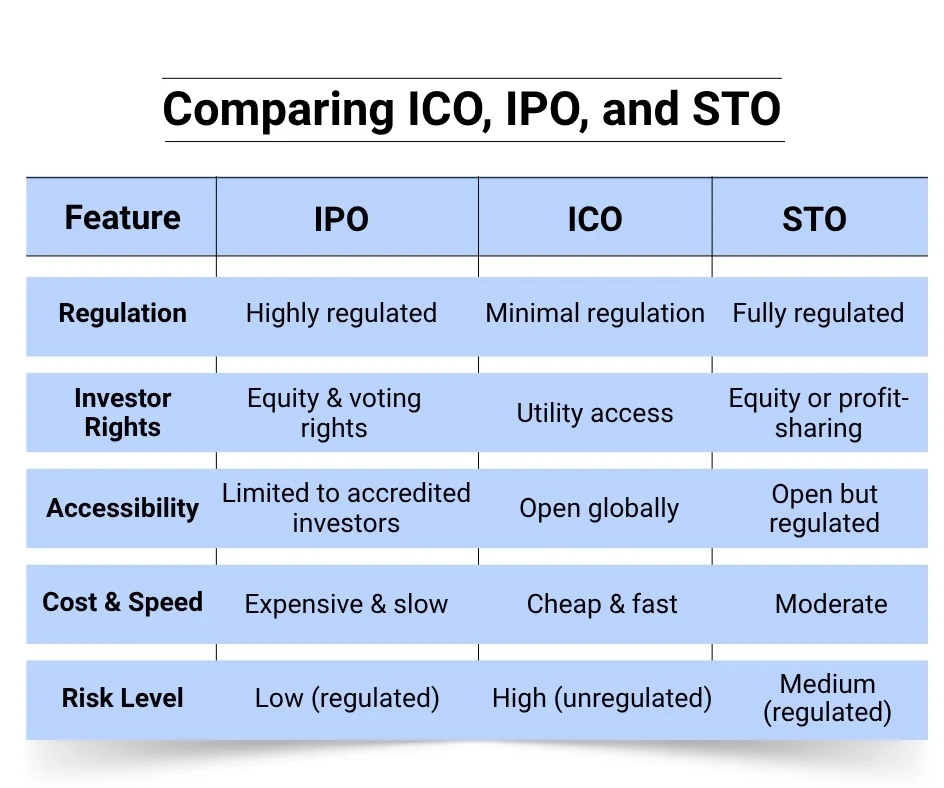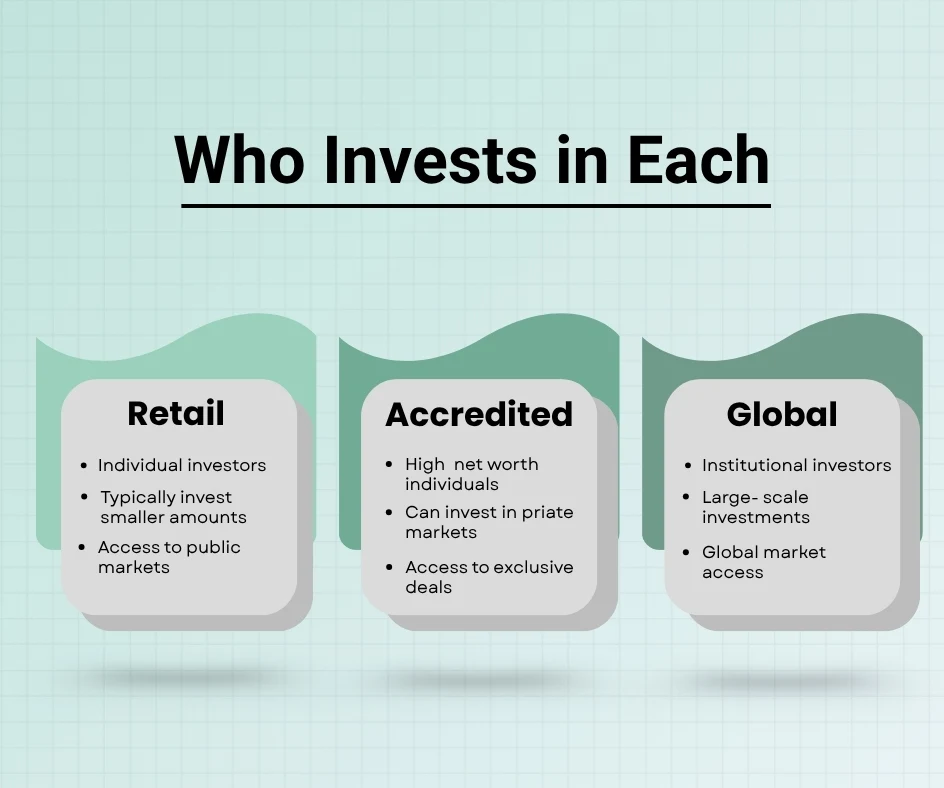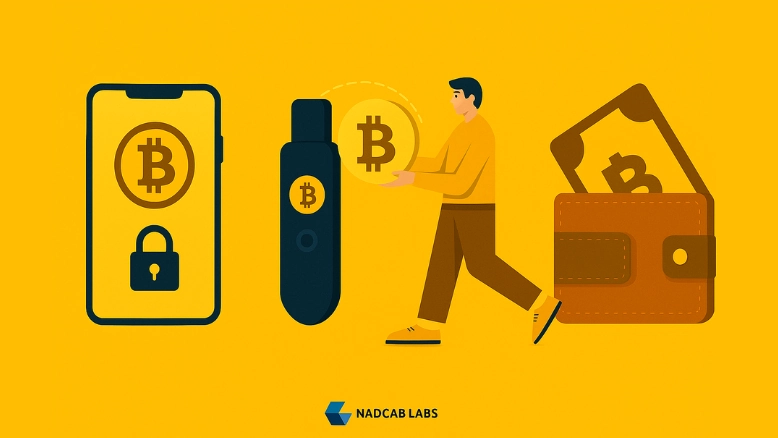
Over the past decade, the way businesses raise capital has undergone a remarkable transformation. From the highly regulated world of Initial Public Offerings (IPOs) to the borderless digital ecosystems of Initial Coin Offerings (ICOs) and Security Token Offerings (STOs), the fundraising landscape is evolving faster than ever. These models are not merely financial tools; they represent an economic shift powered by technology, decentralization, and democratization.
Understanding the Core Concepts
1. Initial Public Offering (IPO)
An IPO is the traditional route through which a private company becomes public by offering its shares to institutional and retail investors. It involves strict regulatory compliance, disclosure of financials, and underwriting by investment banks. The goal is to raise capital for growth, debt repayment, or expansion while allowing early investors to realize returns.
While IPOs bring credibility and liquidity, they are expensive and time-consuming, often costing millions in legal, accounting, and underwriting fees. Moreover, smaller companies find it difficult to meet the compliance standards required by regulatory bodies like the U.S. Securities and Exchange Commission (SEC).
2. Initial Coin Offering (ICO)
An ICO is a blockchain-based fundraising method where startups sell digital tokens in exchange for cryptocurrencies like Bitcoin or Ethereum. These tokens may represent utility (access to a platform or service) or, in some cases, security (ownership rights).
The ICO boom began with Mastercoin in 2013 and Ethereum’s token sale in 2014, which raised over $18 million, marking a new era of decentralized crowdfunding. By 2017, ICOs had exploded in popularity, with startups raising more than $6 billion globally, but many lacked transparency or accountability.
ICOs gained traction because they eliminated intermediaries and allowed global participation. Anyone with a crypto wallet could invest in a project, removing traditional geographic and regulatory barriers. However, this openness also created a fertile ground for scams and project failures, as many Initial Coin Offerings were launched without solid business plans or regulatory clarity.
3. Security Token Offering (STO)
The STO model emerged as a more regulated and secure evolution of the ICO. In an STO, tokens represent real financial assets such as equity, bonds, or real estate shares, effectively functioning as digital securities. These tokens are issued on blockchain but are subject to securities laws of the jurisdictions in which they operate.
STOs combine the efficiency and transparency of blockchain technology with the legal safeguards of traditional finance. This hybrid approach offers KYC (Know Your Customer), AML (Anti-Money Laundering) checks, and detailed disclosures, ensuring greater trust and investor protection.
Because of their regulatory nature, STOs are considered the bridge between conventional equity markets and decentralized blockchain ecosystems. They provide investors with confidence and issuers with access to global capital while maintaining compliance.

While IPOs ensure investor protection and stability, ICOs encourage innovation and global participation. STOs attempt to balance both, offering innovation with compliance.
How These Models Are Reshaping the Economy
1. Democratizing Capital Access
Traditional capital markets favor large corporations with access to investment banks and regulatory resources. ICOs and STOs disrupt this monopoly by allowing startups, developers, and entrepreneurs worldwide to raise capital directly from the public.
A blockchain project in Kenya or India can now access funding from investors in the U.S. or Europe without the need for intermediaries. This global participation fuels financial inclusion and supports early-stage innovation on a scale never seen before.
2. Fractional Ownership & Tokenization of Assets
One of the biggest impacts of STOs is fractional ownership. Assets such as real estate, art, or commodities can be tokenized, divided into thousands of small ownership units represented by tokens. This allows small investors to buy fractions of assets previously accessible only to the wealthy or institutions.
For instance, a $10 million property can be divided into 10,000 security tokens worth $1,000 each. Investors can trade these tokens on secondary markets, enhancing liquidity and market efficiency.
3. Reducing Intermediaries & Costs
Blockchain’s decentralized structure eliminates the need for intermediaries such as brokers, custodians, and clearing houses. This results in faster transactions, lower fees, and greater transparency.
While IPOs can take months to complete, ICOs and STOs can be launched in weeks. Smart contracts automate compliance and fund distribution, reducing the dependency on banks or middlemen.
4. 24/7 Global Liquidity
Unlike traditional stock exchanges that operate during fixed hours, tokenized assets can trade 24/7 on decentralized exchanges. This continuous liquidity benefits both issuers and investors, allowing instant settlement and real-time price discovery.
Launch Your ICO with Expert Blockchain Developers
Start Your ICO Project Now5. Transparency and Immutable Records
Every transaction in an ICO or STO is recorded on a blockchain ledger, creating an immutable and auditable trail. This level of transparency builds trust between issuers and investors. Fraud or double-spending becomes nearly impossible due to the cryptographic verification process.

Challenges and Risks
1. Regulatory Uncertainty
One of the biggest challenges ICOs faced was a lack of legal clarity. Many projects were later classified as unregistered securities, leading to legal action by regulators like the SEC. STOs aim to address this, but global regulatory harmonization remains incomplete.
2. Market Manipulation and Scams
During the 2017 ICO boom, reports suggested that nearly 50% of ICOs failed within four months of launch. Pump-and-dump schemes, misleading whitepapers, and anonymous founders eroded investor confidence.
This history underscores the importance of regulation and due diligence in token-based fundraising.
3. Liquidity Challenges
While STOs promise liquidity, the reality is that security token exchanges are still developing. Low trading volumes and a lack of standardized regulations limit secondary market activity for now.
4. Cybersecurity and Technical Risks
Smart contracts are not immune to vulnerabilities. Code flaws or exploits can lead to massive fund losses, as seen in infamous DeFi and ICO hacks. Hence, independent smart contract audits are crucial before token issuance.

The Future of Digital Fundraising
As regulatory clarity improves and investor trust grows, STO Platforms are likely to dominate digital fundraising. Analysts predict that the tokenized securities market could exceed $10 trillion by 2030, integrating seamlessly with traditional financial systems.
Moreover, tokenized IPOs (where public companies issue shares on blockchain) could emerge as a hybrid model, combining transparency, speed, and legal compliance.
In the long term, the convergence of DeFi (Decentralized Finance), tokenization, and AI-driven analytics will redefine how capital flows through the economy. Financial ecosystems will be borderless, programmable, and accessible to everyone, not just institutional elites.
Conclusion
The rise of ICOs, IPOs, and STOs reflects the ongoing fusion between technology and finance. IPOs continue to offer regulatory stability, ICOs brought decentralization and innovation, while STOs combine both worlds, regulatory compliance with blockchain efficiency.
As the global economy shifts toward tokenization, these models will define how value, ownership, and trust are exchanged in the digital era. Success will depend not on speculation but on transparency, regulation, and real-world utility, the true pillars of sustainable financial evolution.
Frequently Asked Questions
ICOs open funding to a global retail audience, IPOs target accredited and institutional investors, and STOs attract verified investors, each altering the scope and accessibility of investment.
The choice depends on the project: ICOs suit early-stage blockchain startups, IPOs benefit established firms seeking public markets, and STOs are ideal for regulated, asset-backed ventures.
An ICO (Initial Coin Offering) is a decentralized token sale for blockchain projects, an IPO (Initial Public Offering) is a traditional stock market debut for companies, and an STO (Security Token Offering) is a regulated token sale tied to real-world assets, blending crypto and securities.
IPOs are heavily regulated by securities authorities, STOs follow similar compliance rules, while ICOs operate in a less regulated space, often facing scrutiny depending on jurisdiction.
These models reshape the economy by enabling faster capital raising (ICO), democratizing investment (IPO), and merging traditional finance with blockchain security (STO), driving innovation and new investment opportunities.
They foster economic growth by accelerating startup funding (ICO), expanding market access (IPO), and integrating blockchain efficiency with traditional finance (STO), boosting innovation and liquidity.





